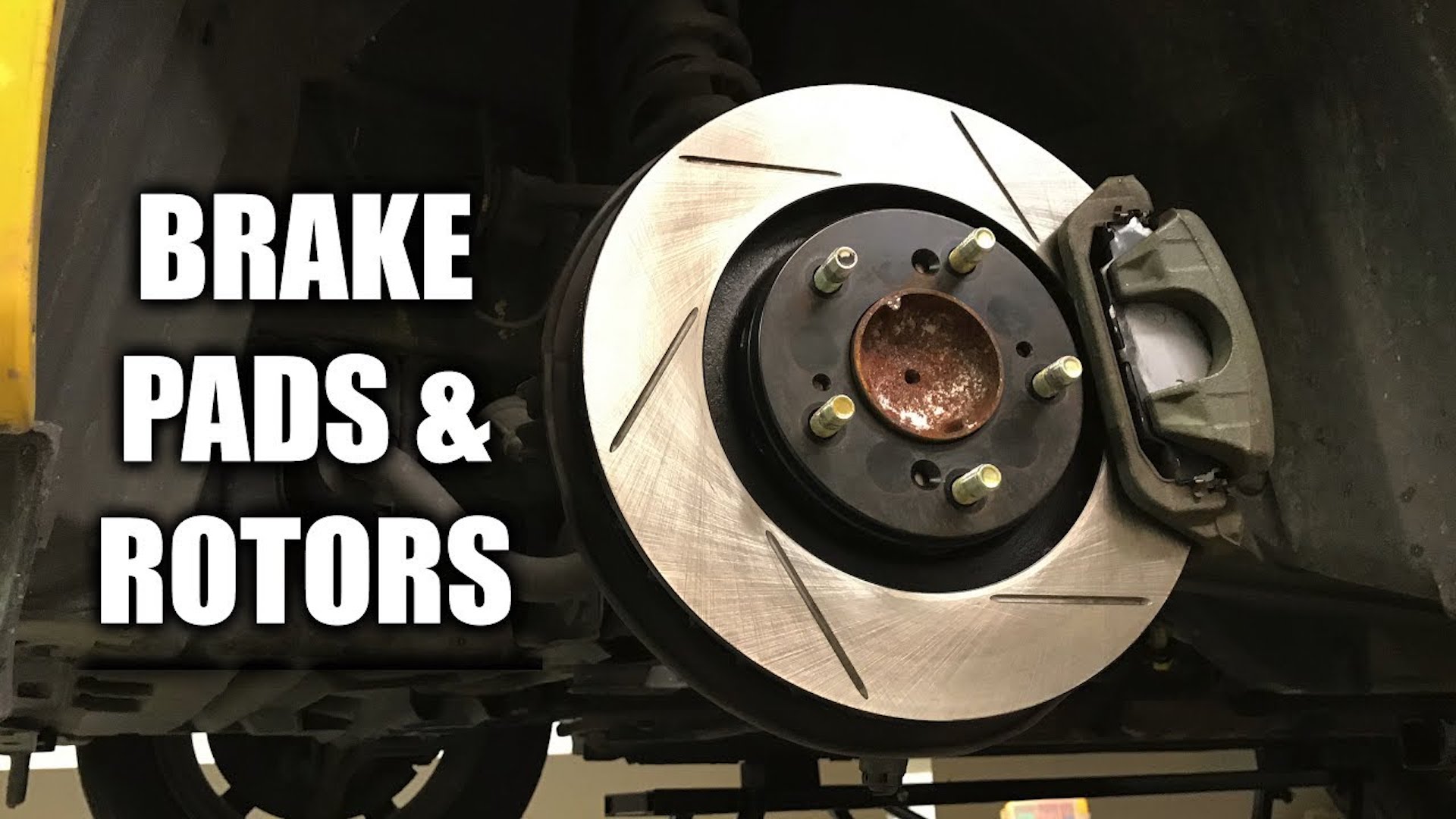
The gray film is material from the pads transferring onto the rotor face and the blue tint indicates that the rotor has reached the proper break-in temperature. This inevitably creates grooves or gouges.
A clamp caliper makes contact on both sides of the rotor when you apply the brakes.
How to install rotors and brake pads. Raise the vehicle and remove the wheel. Loosen the lug nuts with a breaker bar and socket while the wheel is on the ground and stationary. Raise the vehicle with a hydraulic jack from a secure point.
Place a jack stand or stands under the appropriate points and safely lower the vehicle onto the jack stands. Need new brake pads and rotors. Learn how to replace your brakes yourself and save more than half the cost of a shop.
I show you every step including how to. A new OE quality brake rotor will help your vehicle stop faster and more smoothly will be easier to install and will help your brake pads last longer. If you are reusing the rotor all the rust from inside the hat needs to be removed with a wire brush to ensure the rotor mounts flush against the hub for smooth braking.
We recommend bleeding the brakes every time you replace the pads and rotors. Not all vehicles have the same bleeding procedure. You should always refer to the Factory Service Manual for the proper procedure.
After bleeding the brakes make sure the brake fluid reservoir is filled to the max line. Do not overfill the reservoir. The only time youll need to replace your brake pads and rotors is when the pads are worn and your rotors are warped though that doesnt happen often.
Rotors are engineered to last about. Pads made of cast iron and fitted with a textured metallic coating apply pressure to the rotor when the brake pedal is pressed and slow the turning disc until it comes to a complete stop. Two pads apply pressure on each side of the rotor squeezing it until it stops rotating.
Labor at a shop to replace rotors and pads is approximately 150 to 200 per axle. Brake rotor and pad repair generally comes out to around 250 to 500 per axle when visiting a professional shop. Calipers are the most difficult and expensive aspect of the braking system to replace.
Once those brake pads and rotors are mounted it is essential to properly break them in. Bedding in commonly known as breaking in new brake pads and rotors is necessary for new brakes to work properly. The process works to put a layer of material onto the friction surface of the rotor from the brake pad.
Examples of some estimates of the cost to replace brake pads and rotors on common vehicles using 100 an hour as a labor rate are as follows. For a 2007 Volkswagen Jetta factory pads are about 90 for the front and 61 for the rear. Factory rotors are about 86 each for the front and about 45 each for the rear.
Brake Pad Replacement Rotor Replacement. The most complete brake service includes fully replacing brake pads and rotors which gives you better stopping power and more fade resistance. Like brake pads brake rotors wear out over time.
Brake rotors must meet a certain thickness requirement to be considered safe. If they are thinner than the. Ensure the caliper slides are cleaned and lubed with caliper slide grease and has suitable brake pads then place the caliper over the rotor in the position you originally found it in.
Line up the bolt holes and reinstall the bolts you removed to take the caliper off of the rotor. If your brake pads arent replaced at the correct time it can cause the metal backing plates on teh brake pads to contact the rotors. This inevitably creates grooves or gouges.
When your rotors become warped gouged or worn thin the effectiveness of the brake system diminishes. The gray film is material from the pads transferring onto the rotor face and the blue tint indicates that the rotor has reached the proper break-in temperature. These are good signs that you have bedded your brakes properly.
Some brakes such as big brake kits or new pads installed onto old rotors may require a second bed-in cycle. Take out the clips that are meant to keep the pads attached Install new pads and put on some lubricating grease. Pull out the pistons by popping the brake fluid reservoir cap open.
Gently glide the caliper into place and tighten the bolt situated on the lower side of the caliper. Brake pads are found on each of the two front wheels on most modern vehicles. Behind each wheel a metal rotor is attached.
A clamp caliper makes contact on both sides of the rotor when you apply the brakes. To soften metal-on-metal contact removable brake pads sit on each caliper and actually make contact with the rotor. Brake friction material will transfer to the surface of the rotor during your everyday driving.
If you replace your brake pads without replacing your brake rotors you will often get braking noise and diminished performance. Heres something else to consider when youre in need of a brake job. When you hit the brakes physics comes into play.
Make sure that the new brake rotor is spotlessly clean. You can use brake cleaner to clean all particles. Mount the new brake rotor on the wheel bolts.
Replace all the nuts that you had removed. Now you can safely reset the tire and lower the vehicle. The brake rotor has a lifetime of thousands of miles but it wears out over time.
